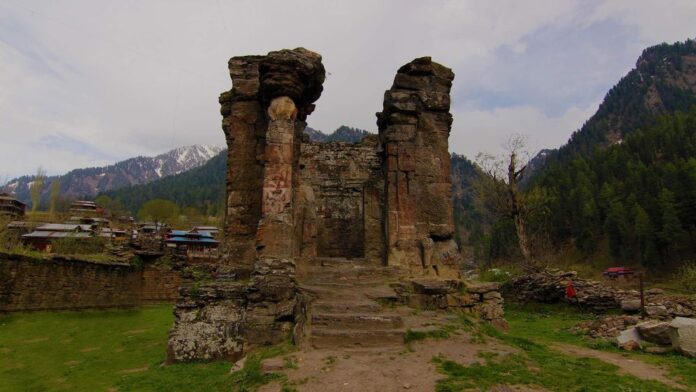One of the world’s ancient learning centres is nestled in the majestic mountains 221 kilometres (137 miles) from Muzaffarabad, the capital of Azad Jammu and Kashmir (AJK).
The stone slabs stairs, which are alarmingly uneven and difficult to climb, lead to a wide courtyard on the outskirts of the gorgeous Narda Mountain, which formerly housed a university and a wealthy library, similar to Taxila near Islamabad and Nalanda in India’s northeastern state of Bihar.
Similar to Taxila in Islamabad and Nalanda in India’s northeastern state of Bihar, the stone slabs stairs lead to a spacious courtyard on the edges of the picturesque Narda Mountain, which formerly housed a university and a vast library.
Until the 11th century, historians estimate that about 50,000 pilgrims visited the location on the left bank of the raging Neelam River. On the southern side of the temple, the famed Madhumati River, also known as Sharda or Khutchal River, flows.
The site was essentially regarded by Buddhists as a centre of study before it was converted into a Hindu temple, according to source, the chair of the Fine and Arts Department at Azad Jammu and Kashmir University Muzaffarabad.
The building of worship was restored in the 19th century under the reign of Hindu Dogra rulers of undivided Jammu and Kashmir, according to Khawaja Abdul Ghani, a local historian and author.
The main structure is approached through a 9-foot-wide stairway with 63 steep stone steps on either side, as well as a large handrail that is also in ruins.
This renowned university is thought to have been visited by Hindu seer Adi Sankaracharya, who set out on a journey in the eighth century to dispute with Buddhists in order to revive Hinduism.
Ghani removed his shoes before approaching the stone enclosure, which is claimed to be a shrine built by Shankaracharya. The sanctum sanctorum is now reduced to a small space with no roof.


